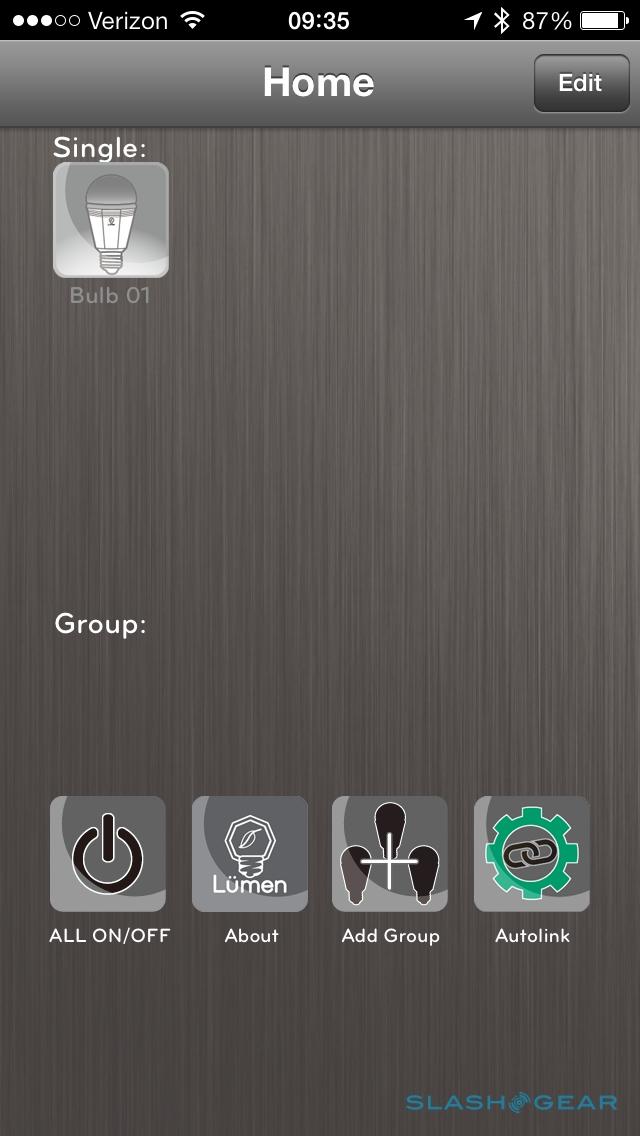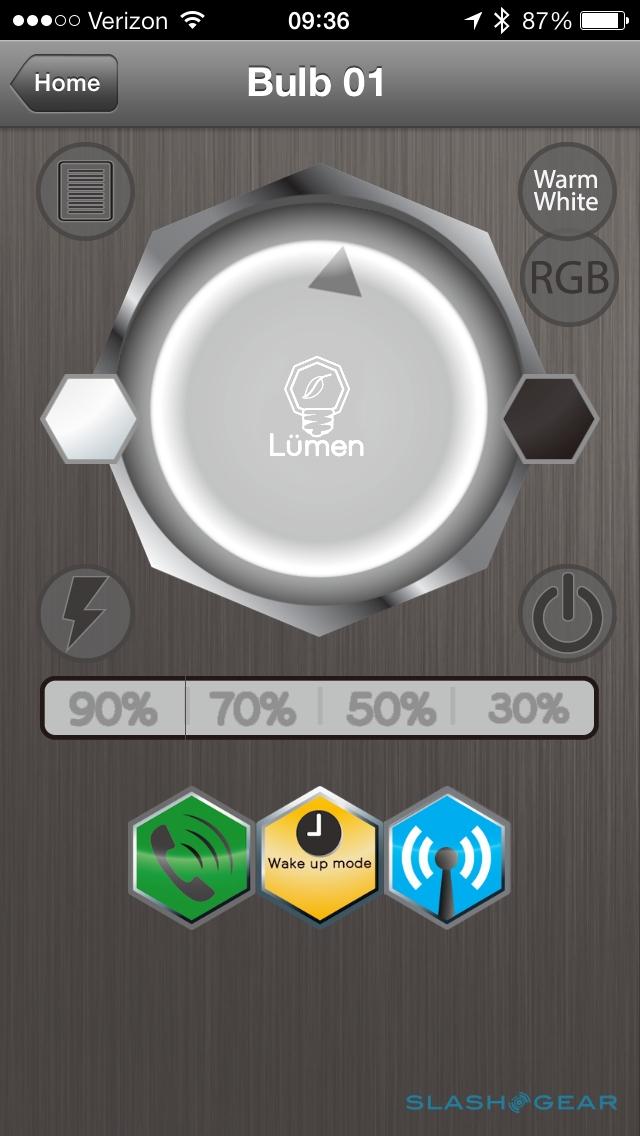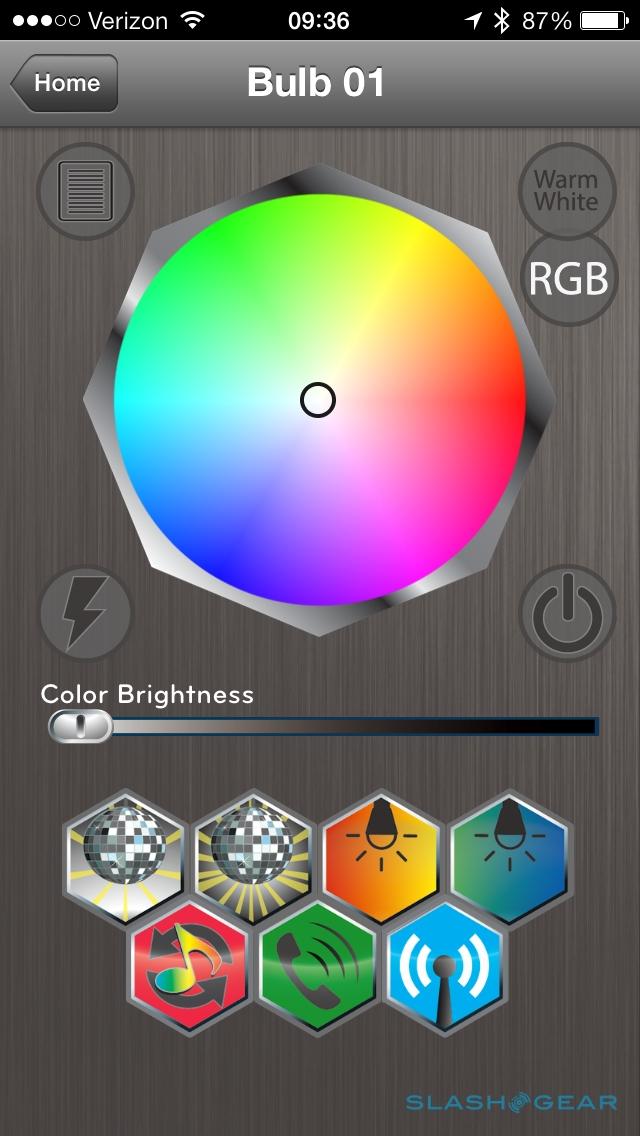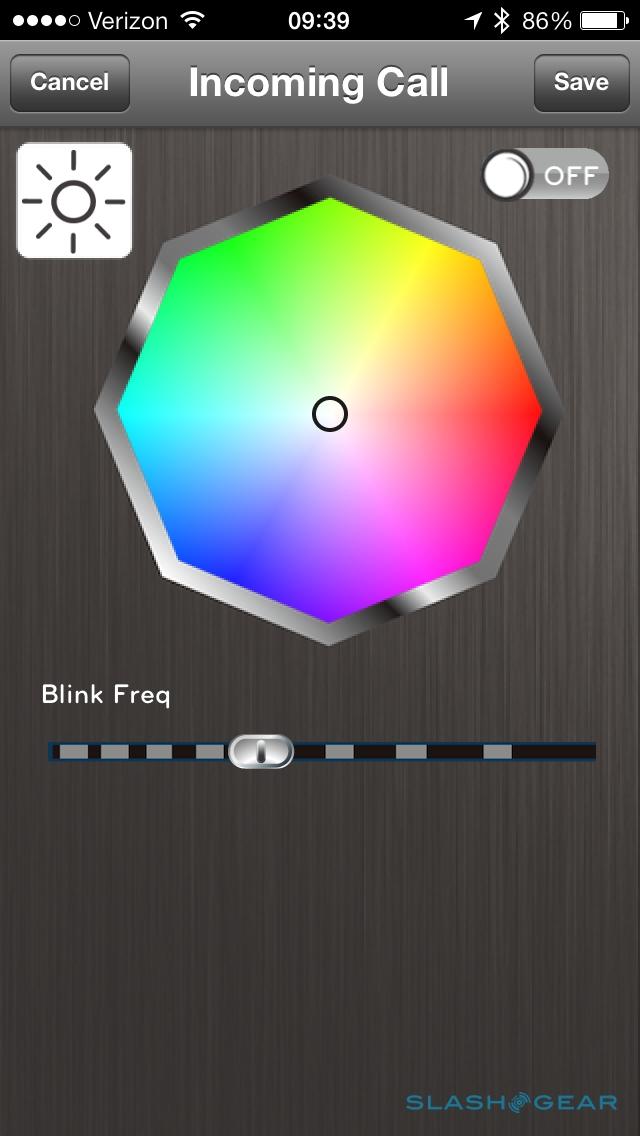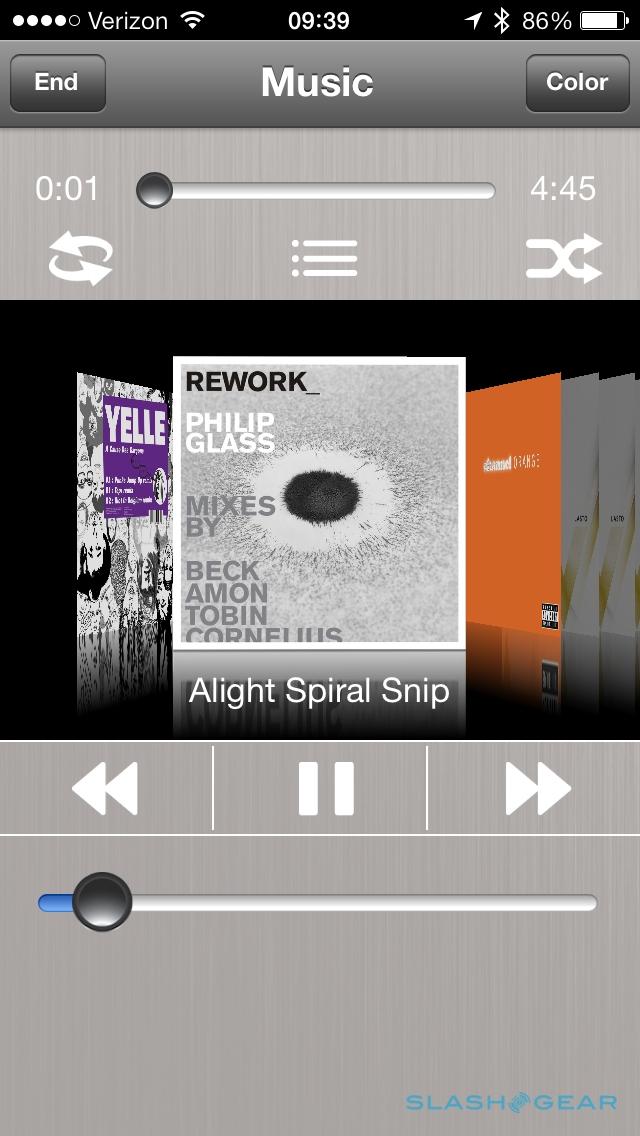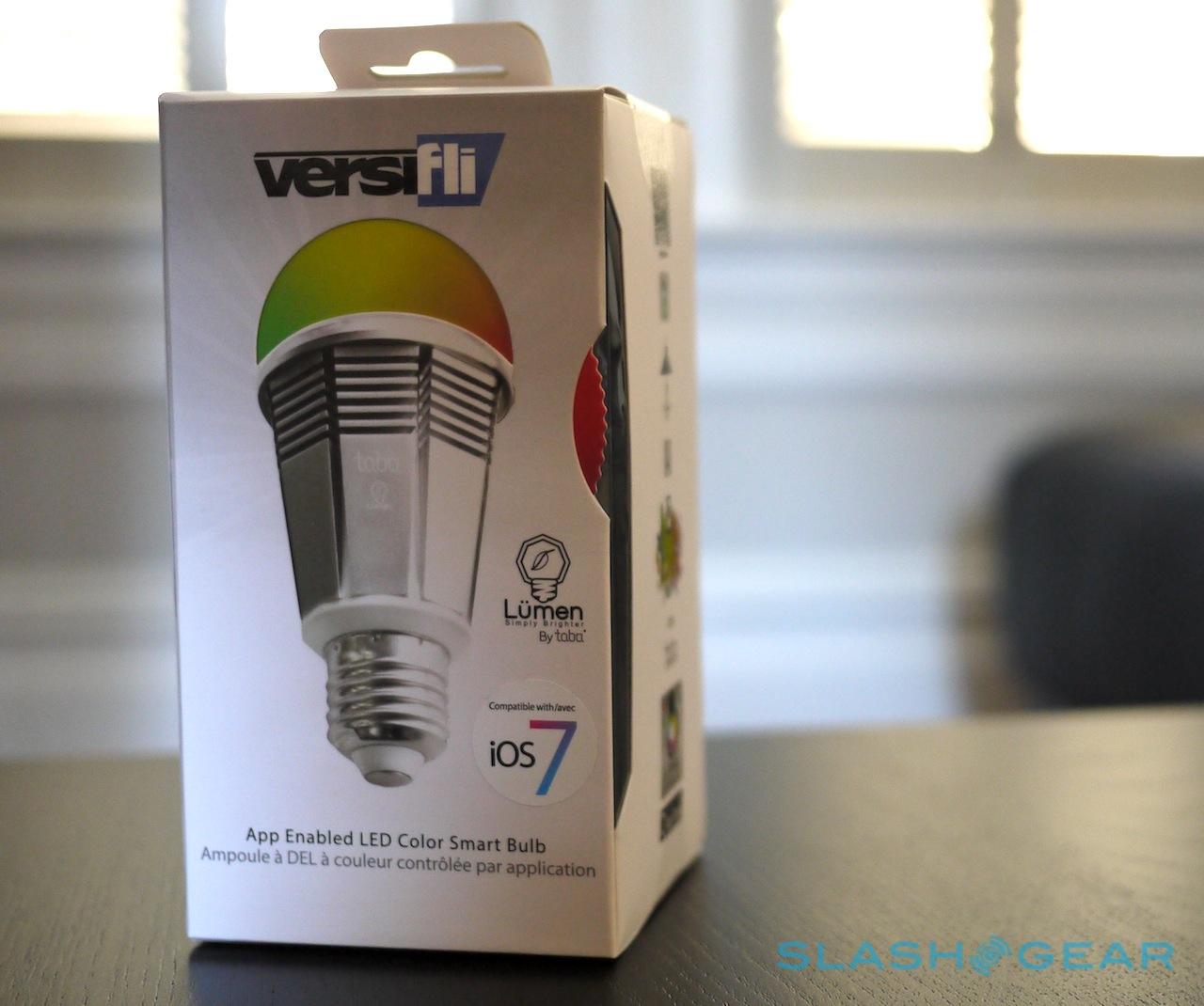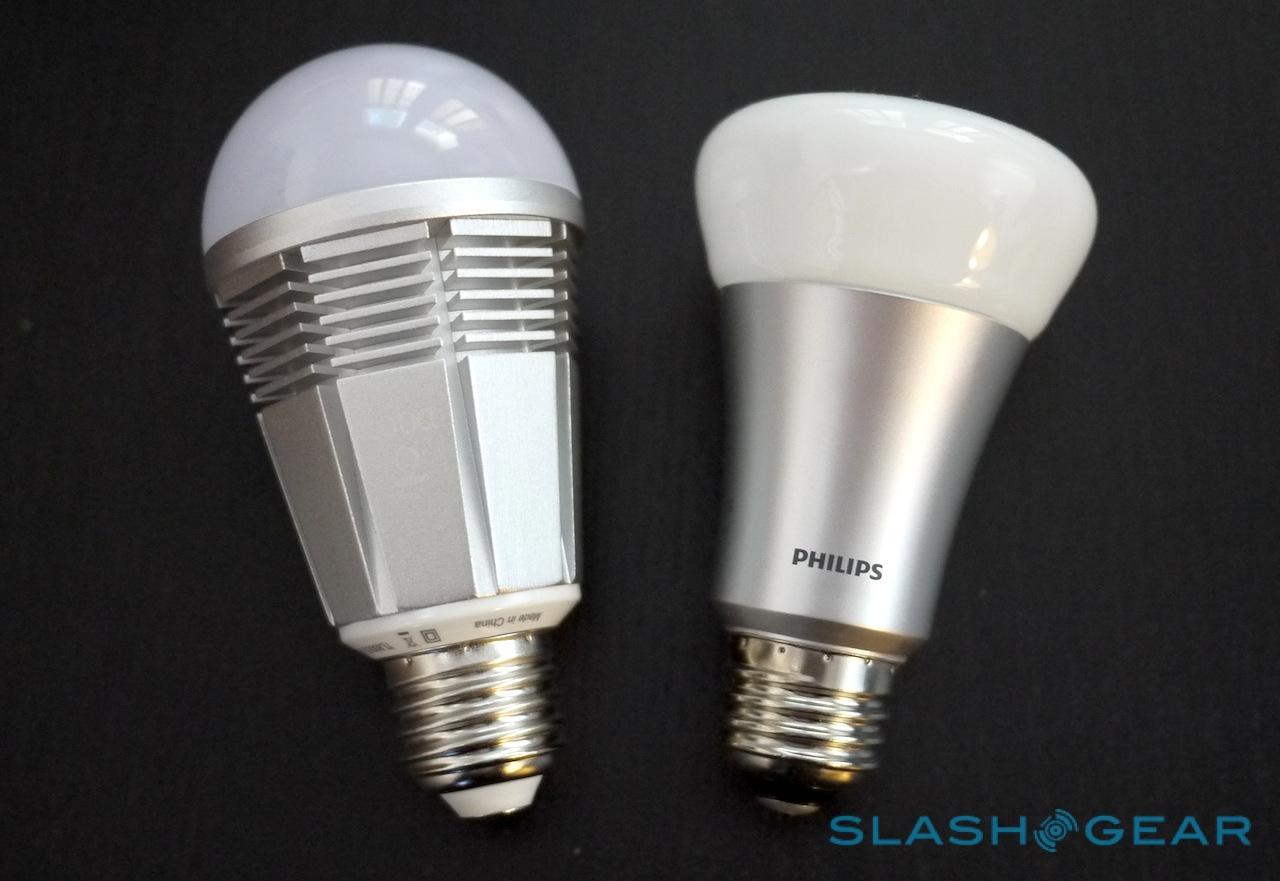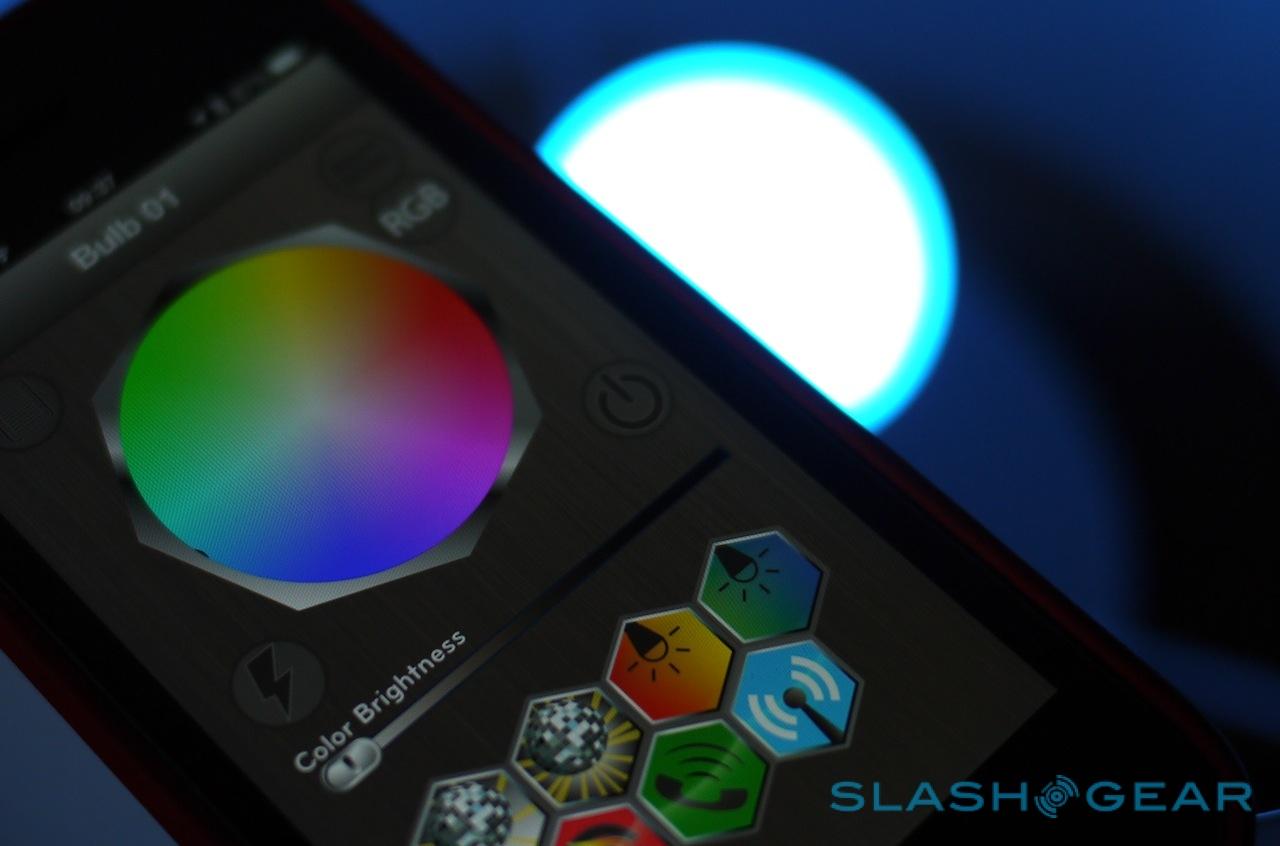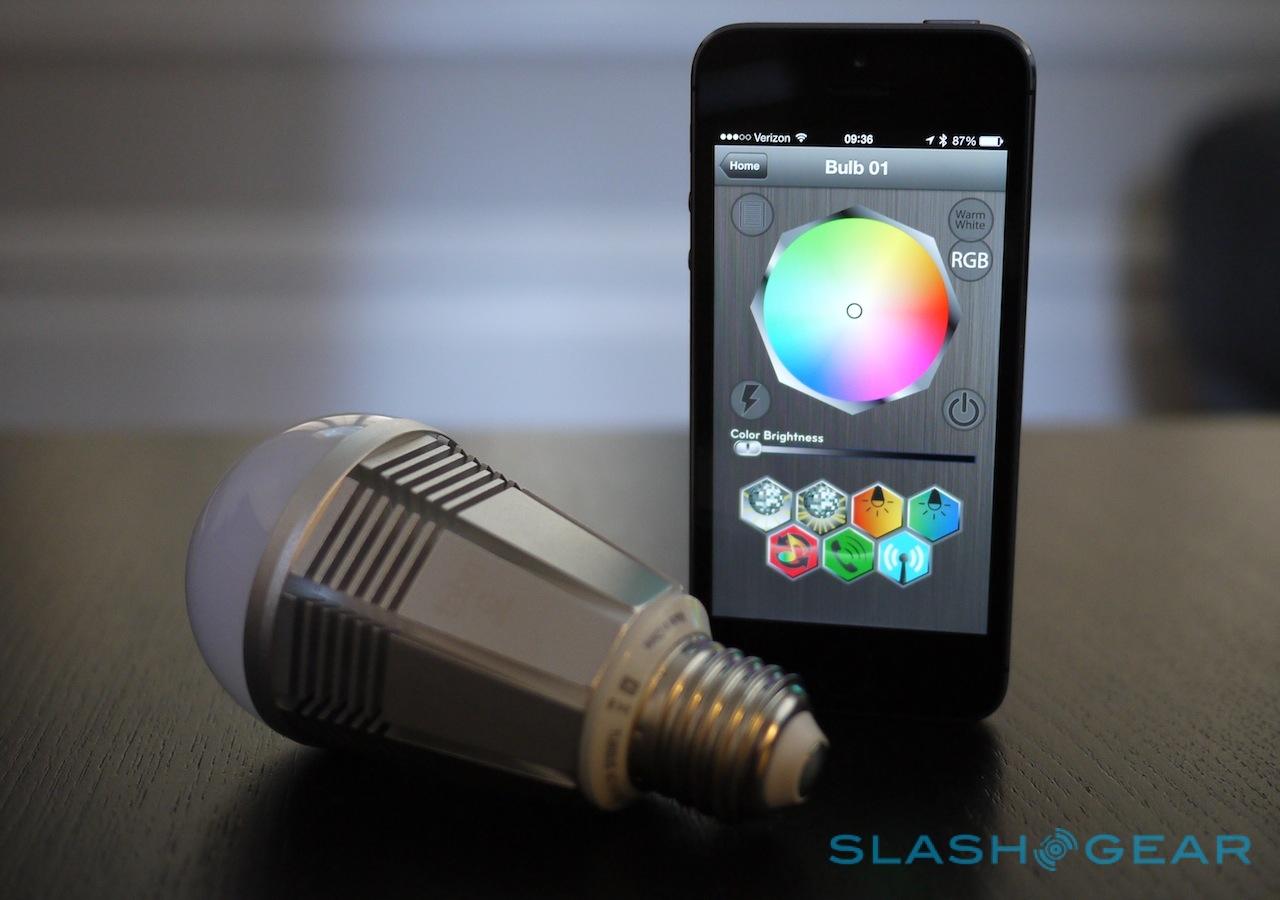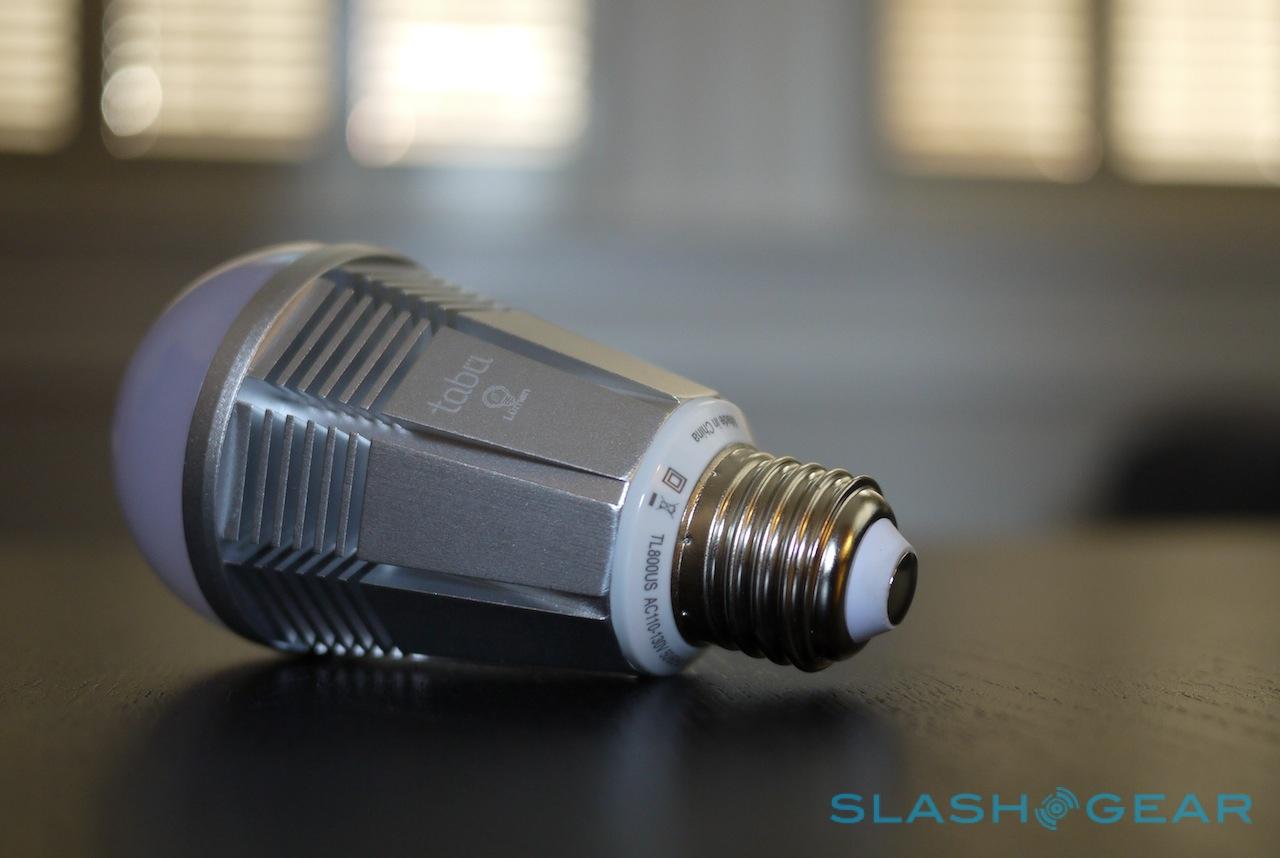Lumen TL800 Bluetooth Bulb Review
Colorful remote-control lighting isn't the preserve of the multi-million dollar mansion any more, and Tabu wants to democratize smart home bulbs even further with the Lumen TL800. It's not the first smartphone-controlled LED bulb, but unlike Philips' hue, however, Tabu has turned to something far more prevalent in today's phones and tablets to make the connection: Bluetooth 4.0. Does that make Lumen the remote bulb for the mass market? Read on for the SlashGear review.
TL800 Bulb
Tabu's first bulb is a hefty little thing, weightier than either a traditional incandescent, a newer LED, or a Philips hue bulb courtesy of a sturdy aluminum heatsink. It's not unpleasant to look at, mind, though once it's screwed into a fitting that's probably not much of an issue either way, and it's about the same size as a chunky regular bulb so should work in most straight-swap situations.
The Lumen TL800 is rated as a 40W equivalent, with 400 lumens maximum output; in contrast, hue bulbs are brighter, at around 600 lumens, and that's noticeable when it comes to lighting up a room with a single fixture, particularly when both are set to regular white. The TL800 got noticeably hotter to the touch when left on for the same amount of time as a hue bulb, we discovered; not finger-burningly so, but uncomfortable. Tabu's bulb should last for 30,000 hours on average, the company says, and the white/blue/red/green LEDs inside can be mixed up for a claimed 16m combinations.
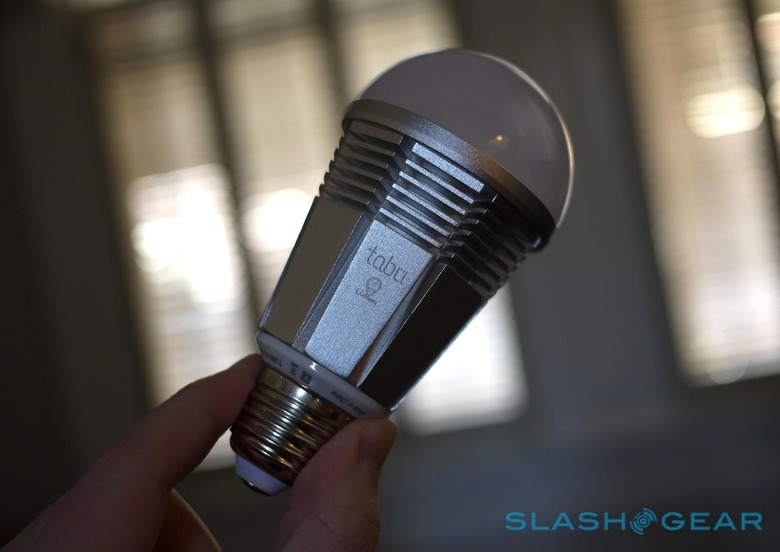
Whether you'll ever actually manage to see all 16m is a moot point, probably, but the colors on offer are generally bright and vivid. The white light is a little yellower than hue's default, which takes some getting used to, however. It's also worth mentioning that the shape of the bulb – with its hemispherical glass top – means the spread of the light is particularly biased forward, whereas we found other LED bulbs had a more even spread around. How much of an issue that is will depend on your lamp fixture of choice, of course.
Lumen app and Setup
Tabu offers both iOS and Android versions of its remote app, but the setup experience proved quite different depending on which platform we were working from. Simplest was iOS: we installed the app, screwed in the bulb – which defaults to "on" and white when the lamp is turned on, useful if you need light straight away and don't want to reach for your phone first – and it automatically showed up in the list of bulbs on our iPhone. Obviously you'll need to have Bluetooth turned on, but there was no pairing involved.
From there it was a matter of tapping the bulb icon and then choosing which color we want: either the tone and brightness of white light or, by jumping into the RGB menu, our preferred color, saturation, and brightness. Lumen does all that with a simple color chart around which you can drag your fingertip, the bulb reacting almost instantaneously.
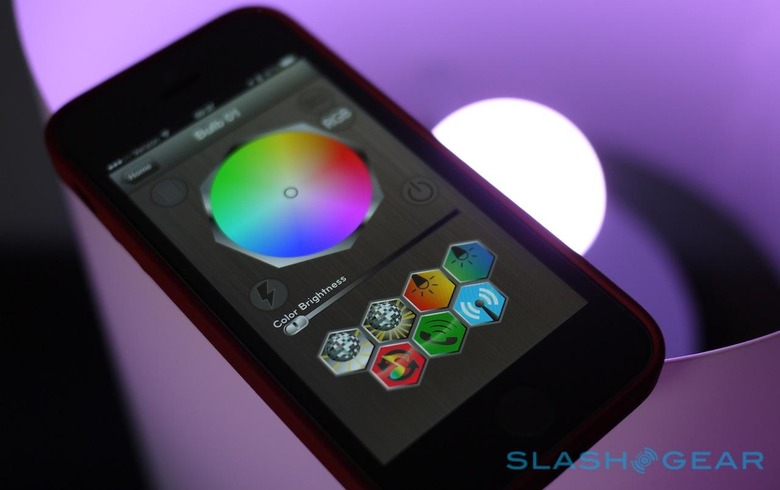
A row of hexagonal icons underneath jump into the app's different speciality modes, which range from the basic – turning the lights on and off based on the clock – through to flashing them with a selectable pattern when a call comes in, and then party mode, where the bulbs flicker with different colors and patterns to mimic a glitter-ball. There's also a music mode, which plays tracks saved on the iPhone and pulses the bulb in time with the music and singing; however, you can't use it with streaming services, like Spotify or iTunes Radio, and since the Bluetooth is already occupied controlling the bulb, you can't play the music through nearby Bluetooth speakers.
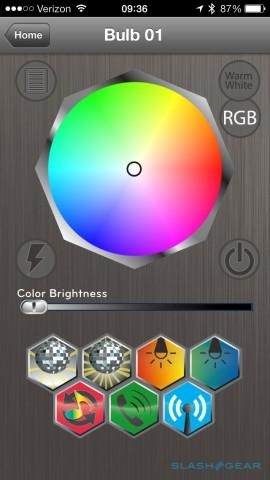
Another option is proximity control, which turns the bulb on when the phone nears. The bulb is set to auto-reconnect by default, though if you're already using the Bluetooth connection it won't be able to also "see" the bulb. Tabu quotes around 30ft of range for Bluetooth 4.0, though that will depend on how many walls are in the way; we found ourselves wishing there was some way to tune the distance at which the bulb activated, after inadvertently turning it on when in a bedside lamp while someone was trying to sleep. When you switch away from the Lumen app, then back again, the bulb communicates its current color setting.
Unfortunately, while the iOS app proved solid, the Android app was less successful. Part of that is out of Tabu's control, since not every Android device has Bluetooth 4.0 yet. Without it, the app simply won't work with the bulb; however, even with a Bluetooth 4.0 device like the Nexus 5, we experienced a number of crashes and failed reconnects between lamp and phone.
If you have more than one TL800 bulb, you can group them together and control them in unison; we only had a single bulb for review, so were unable to try this feature. Each bulb can only be controlled by one device as well: when the bulb was linked to our iPhone, we couldn't then control it from the Nexus 5. Even closing the Lumen app didn't "free up" control of the bulb sometimes, with the only solution being power-cycling the bulb, toggling Bluetooth on and off, and then restarting the app, at which point we could finally take command on the second device. In contrast, multiple installations of the hue app can control all of the various bulbs simultaneously.
One other concern is the absence of security: with no pairing process involved, we were able to simply load up the Lumen app on another device and start controlling the bulb. That means anybody else could do the same as long as they were within range.
Value and Ecosystem
Getting started with Tabu's system is cheaper than with Philips' hue. A single TL800 bulb is $69.99, whereas the hue starter pack – which comes with three bulbs and the ZigBee hub the system requires – is $199.95. However, if you want three or more bulbs, Lumen works out as more expensive: $209.97 to match the three Philips includes, and then each subsequent hue bulb is $10 less than its Lumen equivalent.
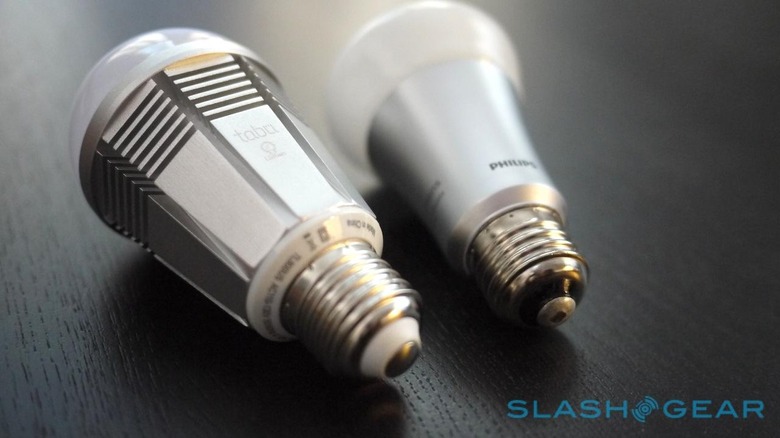
The other notable drawback is the absence of a broader ecosystem, at least today. Whereas hue has opened itself up to third-party developers with an API, allowing Philips' bulbs to be integrated into other smart home platforms such as Revolv as well as used as colorful notifiers through services like IFTTT, Tabu's bulbs are currently only accessible by the official app. Hopefully that will change, but for the moment if you want to integrate your lighting into a more comprehensive home automation system, Lumen probably isn't right for you.
Wrap-Up
The hub-free, direct control Tabu's bulb offers is certainly appealing. No need for a WiFi connection between phone and hue hub and more straightforward installation (assuming you're on iOS): with an iPhone, the TL800 was as close to plug-and-play as we've seen with remote-controlled lighting.
Unfortunately, the user-experience beyond that point isn't quite so consistent. Tabu can't be held responsible for the absence of broad Bluetooth 4.0 support across all Android devices, but its app feels half-baked compared to its iOS equivalent. The lack of security across the board, the lower brightness, and the issues reconnecting or switching control between different devices are further frustrations.
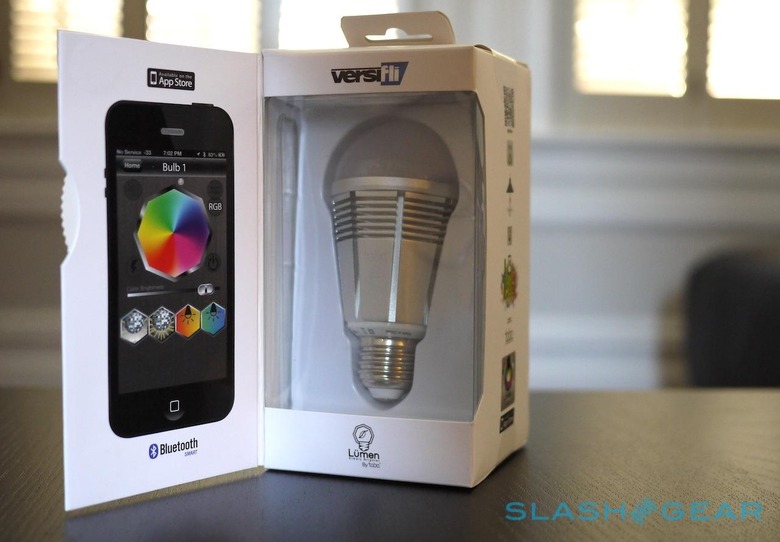
Most limiting, though, is the use of Bluetooth itself. Point-to-point control over lighting works if you're near the lamp, and if there's only person who is likely to be operating it: in contrast to hue, which we've found has a high degree of household-approval-factor, and can even be remotely operated through your phone's cellular connection when you're away, after a couple of times having to turn the Lumen bulb on and off, toggle Bluetooth, and mess around waiting for apps to reconnect, less geek-minded partners are going to quickly give up.
For the moment, then, that limits Tabu's system to a more tech-savvy audience, though since it costs more to outfit a whole home with TL800 bulbs than it does with hue they might prove reluctant too. Lumen makes most sense if you just want one or two bulbs in your office or study; right now, the system doesn't feel ready to scale for the full smart home.

